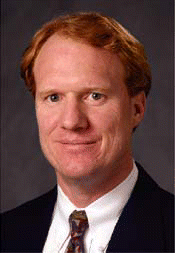Electronic medical records (EMR) are to health care professionals what world peace is to humanity-everyone wants it, but not everyone agrees how to go about it.
Explore This Issue
July 2008One EMR company, however, San Francisco-based Practice Fusion, is quickly finding success with physicians of all types. Undoubtedly, one of Practice Fusion’s draws is that it’s free to use. The catch-and the factor that agitates naysayers-is that the product is sprinkled with advertisements that are based on the content of the medical records. Practice Fusion launched its revamped EMR and Practice Management suite in October 2007 and, by the beginning of April 2008, had at least 500 users. Adoption has been phenomenal, said Ryan Howard, Chairman and Chief Executive Officer of Practice Fusion. The growth is unprecedented right now.
Free, and Then Some
The cost-or rather, the lack thereof-of Practice Fusion is a selling point that sets it apart from other health information technology products. There’s obviously a federal mandate, said Mr. Howard, referring to the nationwide goal of implementing EMR by 2015, as presented by President Bush in April 2004. But the low adoption is directly attributed to the very inflated costs of solutions today, the intrusiveness of implementing a solution, as well as the time needed to get the system implemented and users trained on the system.
With these challenges in mind, Mr. Howard and his colleagues developed the free, browser-based EMR product that can be implemented in five minutes and for which training takes one hour. Within 24 hours, patient data will have been extracted from a practice’s billing system and imported into the EMR and practice management system.
From there, physicians can create chart notes of visits and calls, manage medication allergies and immunizations, track appointments and patients, send nursing orders and billing messages, among other features.
With a Catch
As proud as he is of Practice Fusion, Mr. Howard is forthright about the catch: The product is direct-to-physician message-supported-there’s advertising in the product, to cut to the chase. He added, But the advertising is not intrusive. It’s completely private. There are no pop-ups. There’s no obligation to click on the advertising.
These aren’t ordinary, random ads. Ads, powered by Google’s AdSense and similar programs, are generated by keywords found in patients’ information. Anyone familiar with Google’s Gmail has already experienced how these programs work.
Previously, Practice Fusion, too, carried a fee, but its executives discovered that any price was too high for these doctors, said Mr. Howard. So we decided to come up with a novel way to subsidize the cost of the solution.
Commercialism and Bias
As one might expect, there has been some alarm among both physicians and the public about the interplay of commercialism and medicine with Practice Fusion and similar products. For example, a recent article in the New York Times (http://bits.blogs.nytimes.com/2008/03/03/this-blood-test-is-brought-to-you-by/ ) and readers’ comments following it expressed concern about the possibility that these ads could influence a physician’s decisions in treating patients.

Leave a Reply